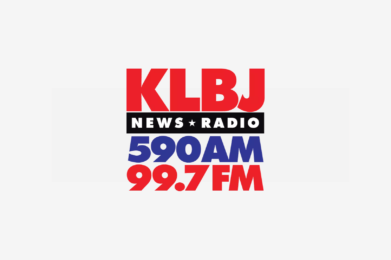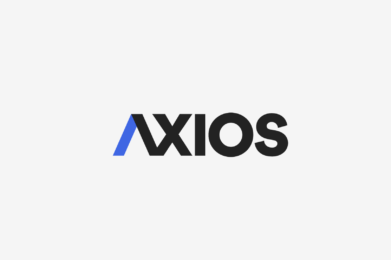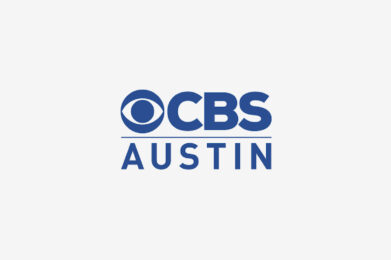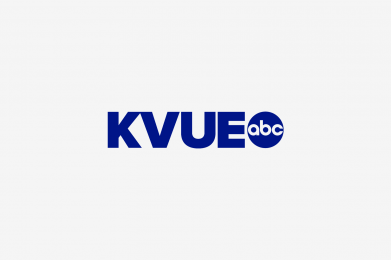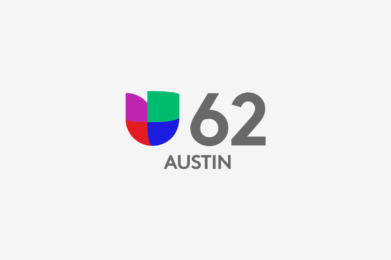AUSTIN’S HIRE LOCAL PLAN

The Austin metro area’s next community workforce plan!
Strategies & Tactics
Addressing equity and skills gaps through training
Austin currently has one of the hottest job markets in the country, but our community continues to grapple with equity concerns such as unaffordability. The Hire Local Plan broadens the aperture of the first Community Workforce Plan to achieve three big things for workforce development: 1) increase skilled local talent while better defining the region’s capacity for training, 2) improve income for local people by creating an affordability index; and 3) grow payrolls for local businesses.
Hire Local Plan at a Glance
VISION
A more demand-driven workforce system that:
- effectively engages employers, CBOs, and educational institutions;
- empowers residents to more efficiently match employers’ skills needs; and
- successfully prepares economically disadvantaged residents for middle-skill jobs
GOAL
To make living in Austin more affordable by improving economically disadvantaged residents’ access to better economic opportunities
STRATEGIES
- Awareness & Enrollment
- Training
- Placement
- Advancement
The first Community Workforce Plan (2017-2021)
- Learn more about the 2017 Austin Metro Area Community Workforce Plan
- See evaluation reports for the first plan
Hire Local in the News
Strategies & Tactics
Strategy #1
Awareness & Enrollment
Cultivate interest in high-demand, quality entry- and mid-level careers
KEY AUDIENCES:
- High school students/parents in economically disadvantaged and high-diversity zip codes
- Opportunity youth: 16 to 24-year olds who are not in school and not working
- Economically disadvantaged workers: Supplemental Nutrition Assistance Program (SNAP) & community based organization clients
- Veterans
OUTCOME: Students and workers are more aware of career opportunities and training options in key industry sectors and in high-demand entry- and mid-level jobs
People make career choices based on a complex set of factors, including the context in which they live, information from key influencers, personal aptitudes, and educational attainment.1 Often, career exploration primarily takes place through family and social networks where mentors or role models play influential roles in career choice. This approach, however, limits the careers considered to those that are known through this existing network. An important outcome of this approach is the over or under-representation of minority groups and genders in certain occupations or occupational groups. In addition, some sectors such as hospitality and retail are beginning to raise the hourly wages for their entry-level positions. Often, these positions do not require education beyond a high school diploma or equivalent. This makes it a challenge to guide people into mid-level careers, which require postsecondary training before a person is eligible for employment.
In the face of tighter labor markets and growing skills gaps, the workforce development community must play a larger role in building awareness of a broader range of career opportunities through more formalized campaigns and career exploration activities that reach diverse audiences. This provides individuals with knowledge of a larger universe of career choices. Connecting these career exploration activities to labor market demand allows individuals to make more informed career choices. One of the most promising areas of growth, Technology, poses its own recruiting challenges, since there is a lack of awareness about the skills and certifications that jobseekers need to succeed in many Technology occupations.
Furthermore, building awareness of opportunities in high-demand careers is a necessary part of initiatives to strengthen talent pipelines that support employers’ critical hiring needs and provide better access to a more diverse set of candidates. Without interested individuals, training programs cannot produce enough graduates, and employers will not likely have enough candidates to fill open jobs.
A comprehensive approach to awareness building includes a range of activities that vary by scale, costs, and level of engagement. All of these activities are focused on the desired outcome for the strategy, which is getting more economically disadvantaged individuals interested in high-demand entry- and mid-level careers and training programs. The additional interest is intended to lead to more individuals enrolling in entry-level and mid-level training programs. Well-targeted awareness campaigns share information on high-demand entry- and mid-level careers with larger audiences. Career exploration activities provide more focused and hands-on experiences to a smaller number of individuals. Career navigators are the highest touch and the most effective at building awareness. Since they work one on one with residents, the approach is both time intensive and costly.
A combination of all three of these activities, targeted toward and tailored for key audiences, will be required to ensure economically disadvantaged residents enroll in training programs.
At the foundation of these awareness-building activities is accurate information about the region’s labor market, its in-demand careers, and the associated career pathways. This information must be current, employer-validated, and distributed across the Talent Network. This ensures consistent information is shared in the different awareness-building activities and individuals are armed with good information to make their career choices.
[1] Ferry, Natalie. “Factors Influencing Career Choices of Adolescents and Young Adults in Rural Pennsylvania.” Journal of Extension. June 2006, Volume 44, Number 3.
Give input: Learn more about each of the tactics to achieve this goal with the ability to provide comments.
1.1 Labor Market Information
1.2 General Awareness
1.3 Career Exploration
1.4 Career Navigation
No post found
Strategy #2
Training
Equip Workers with the Skills They Need to Succeed
KEY AUDIENCES:
- Community-based organizations/training providers
- Post-secondary institutions
- School districts
OUTCOME: More economically disadvantaged students earn credentials.
Mid-level training programs typically have a business advisory function to help keep the programs grounded in employers’ needs. However, many training providers struggle with finding businesses to serve as advisors and with engaging these businesses at the level needed for meaningful input. At the same time, employers are often asked to serve on many different advisory councils and provide the same input multiple different times. As a result, they must prioritize their time and choose which, if any, organizations to engage with. Centralizing this input function by industry can be an effective means of engaging employers more fully and obtaining the level of input needed to align programs to employers’ needs. This approach allows employers to engage through a single platform that shares their input across the network of training providers. This also allows training providers to better coordinate their response to employer input.
Once employer needs are better defined, the network of training providers is better able to analyze their capacity and identify areas of need. As a network of providers, taking this step reduces duplication of efforts and provides a more holistic assessment of regional training capacity in the context of industry demand. This collaborative approach also creates opportunities to jointly pursue resources for expanding capacity. Coordinating an industry needs assessment and a systemwide training capacity evaluation can ensure that regional programs are well aligned with industry needs, providing candidates with the right skills to fulfill employers’ hiring needs.
While programmatic alignment ensures students are trained with the right skills, training providers must also ensure that students complete the programs. Students from economically disadvantaged backgrounds, in particular, face a variety of barriers to success in pursuing and completing training programs. These barriers include the distance to training sites, a lack of financial resources, and a lack of prerequisite or basic skills needed to enter a program. In addition, individual training providers’ screening practices and scheduling can serve as other barriers. Once a student begins a program, completing the program can be difficult. A range of services from childcare to financial literacy can help these students trouble shoot problems to enable them to persist in their training program. Addressing these barriers for students across the regional workforce system is necessary for reaching the goal of helping disadvantaged residents earn a mid-level credential.
Give input: Learn more about each of the tactics to achieve this goal with the ability to provide comments.
2.1 Alignment
2.2 Capacity
2.3 Access
2.4 Persistence
No post found
Strategy #3
Placement
Connect employers with local talent to fill quality entry-level jobs and good-paying mid-level jobs
KEY AUDIENCES:
- Community-based organizations/training providers
- Post-secondary institutions
- School districts
- College career centers
- One-Stop Centers/American Job Centers
- Apprenticeship programs
OUTCOME: More economically disadvantaged residents secure jobs
The Austin region’s tight labor market makes finding and hiring local talent competitive. Local hiring yields strong benefits for employers; yet, if the competition for local talent remains as steep as it is now, Austin’s position as a talent magnet can make recruiting talent from outside the region easier than finding local talent. To advance the Plan’s goal of placing economically disadvantaged residents in good-paying mid-level jobs, this paradigm must shift.
Building clearly defined opportunities for employers to cultivate their own talent pipelines will help overcome this challenge. Earn-and-learn opportunities, work-based learning activities, networking and program sponsorship are ways that employers can connect with prospective candidates and develop relationships with them. This also helps employers establish or enhance potential employees’ perception of their companies, which improves their ability to attract local talent.
In addition, making it easier for employers to find high-quality candidates within the region will facilitate local hiring. Assisting candidates in presenting themselves well when seeking out local employers will help them stand out in the applicant pool. WFS can provide both resume writing assistance and interview preparation. Regional employers’ propensity to hire local will increase if local candidates are work-ready and more accessible during training and while seeking employment. Providing employers with opportunities to build a positive perception of their company among prospective employees and giving prospective employees an opportunity to showcase their skills and abilities can also facilitate local hiring and retain local talent.
Give input: Learn more about each of the tactics to achieve this goal with the ability to provide comments.
3.1 Competitiveness
3.2 Connections
3.3 Local Hiring
3.4 Hiring Practices
No post found
Strategy #4
Upskilling
Assist frontline workers in acquiring skills to advance into higher-paying mid- and upper-level jobs
KEY AUDIENCES:
- Employers
- Community-based organizations/training providers
- Post-secondary institutions
OUTCOME: More economically disadvantaged residents are upskilled and advanced
“Upskilling” refers to the training and development of current employees to provide them with enhanced skills to perform better and advance to higher-skilled, higher-wage positions.
For some employers, engaging their existing talent base through upskilling opportunities and providing clear pathways for career advancement are critical talent recruitment and retention strategies. However, many employers still seek talent from outside their organizations to fill higher-skill roles rather than mining their existing talent base for potential. In fact, Deloitte estimates that as many as 24 million frontline workers face little to no upward career mobility.1
Yet, employers are finding it increasingly difficult to fill open positions. In the Manpower Group’s 2021 survey, 69 percent of employers are having difficulty filling jobs. In the face of a growing talent shortage nationally, developing talent from within an organization has already become a key to successfully competing for, and retaining, talent. Supporting employers in expanding their capacity to execute upskilling strategies will better position regional employers in the “war” for talent. The Plan’s goal of ensuring economically disadvantaged residents advance in jobs after upskilling will be met by raising awareness of the advantages of developing talent from within and by building a support and learning network that promotes upskilling in the workplace.
[1] Deloitte. A Guide to Upskilling America’s Frontline Workers, 2015.
Give input: Learn more about each of the tactics to achieve this goal with the ability to provide comments.
4.1 Awareness
4.2 Capacity
No post found
Frequently Asked Questions
What successes and lessons learned have you seen in the first Plan?
With the first Plan as a foundation, we want to enhance our evaluation goals to ensure the next plan captures the scope of residents’ success through our implementation strategies. For example, in the first Plan, the primary success metric was the number of people rising above a particular income level (200% of poverty, or above $45,000/year) after training completion. But this does not take in to account how residents move up through various income levels after attaining their new skills. We want to more closely evaluate and ensure all Austinites can ascend a path toward affordability.
Will this updated Plan have the same numerical goals?
More Ways to Partner
Grow Your Business Through Talent
Workforce Solutions Capital Area (WFS) offers tailored solutions at various levels of support to assist you with labor market insights, talent pipeline development, and earn-and-learn. Ultimately, WFS connects local people to the most in-demand industries with quality jobs.
By understanding where local employers see the greatest need for talent, WFS is helping focus our community’s workforce development efforts to build the talent pool while addressing affordability and equity concerns through immediate economic advancement opportunities.



